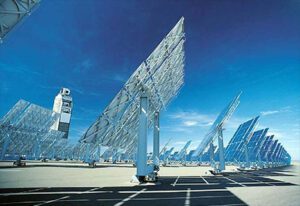Solar performance and efficiency

The conversion efficiency of a photovoltaic (PV) cell, also known as a solar cell, is the percentage of solar energy received by the cell that is converted into usable electricity. Improving this efficiency is a key research goal to make PV technologies cost-competitive with conventional energy sources.
Several factors affect the conversion efficiency of a solar cell. These include the wavelength of light, where some photons are reflected or turned into heat upon reaching the cell, while others generate charge carriers and electric current. Recombination is another factor, involving the cancellation of electric current when electrons encounter holes within the material. Temperature also plays a role, with solar cells performing best at lower temperatures due to potential voltage decreases at higher temperatures. Proper thermal management enhances efficiency and lifespan. Additionally, minimizing light reflection from the cell’s surface through anti-reflection coatings and textured surfaces can increase efficiency.
To determine the conversion efficiency, researchers assess the electrical characteristics of the PV device. This involves measuring the current-voltage relationship by connecting a load resistance to the cell or module terminals according to Ohm’s law. Efficiency is obtained by subjecting the cell to a constant, standard level of light while maintaining a constant cell temperature and measuring the produced current and voltage at different load resistances.

